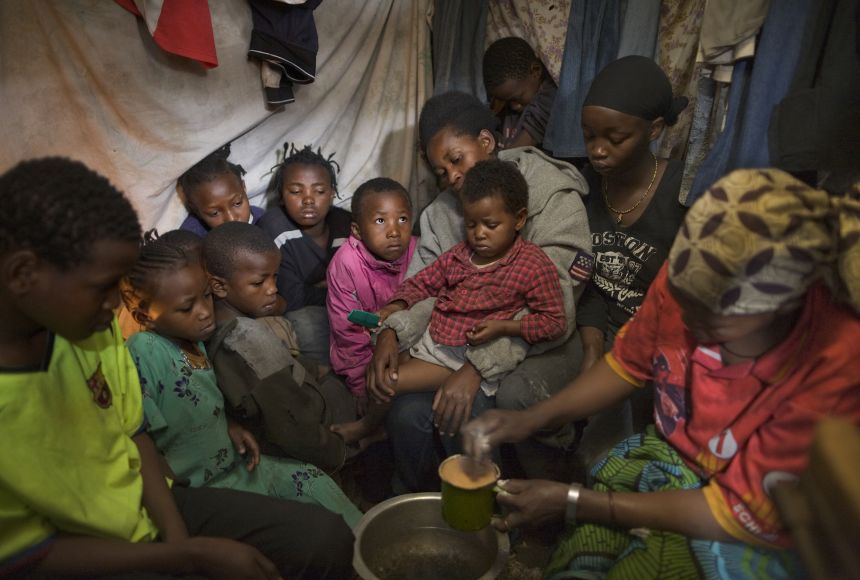This article was originally published October 16, 2015, written by José Graziano Da Silva, UN Director General of the Food and Agriculture Organization.
The international community has embraced a new goal, the eradication of hunger by 2030. That makes us the zero-hunger generation with a shared commitment to make hunger history.
As we commemorate the UN Food and Agriculture Organization’s birth 70 years ago and celebrate World Food Day, we are reminded of FAO’s mission to ensure food security for all, everywhere.
The zero-hunger goal requires us to accelerate our efforts to eliminate hunger and poverty. FAO monitors 129 countries and 72 of those have halved the number of people experiencing undernourishment between the years of 1991 and 2014 and have achieved the Millennium Development Goal. (Since the release of this op-ed, the UN Millemmium Development Goals, have been replaced by the UN Sustainable Development Goals or SDGs. Eliminating hunger is the second goal, or SDG 2.)
Progress, however, has been uneven: Some 800 million people continue to suffer hunger, and almost a billion live in extreme poverty.
We need to break out of the cycles that trap people in poverty and hunger. In a business-as-usual scenario, more than 600 million people are still likely to be hungry in 2030. That’s a long way from zero.
A Pro-Poor Posture
Eradicating hunger requires commitment—political will. It will require sustained efforts in many areas, particularly pro-poor investments in rural areas, where the majority of the world’s most vulnerable live. Economic growth alone will not suffice; it needs to be socially inclusive to ensure sufficient access to food for all.
Pro-poor public investments include infrastructure benefitting small family farms, ensuring sustainable agriculture, reducing post-harvest food losses, strengthening land and water rights, and making sure that the poor and marginalized—whose ranks include many women and youth—have fair access to credit, farm inputs including seed and fertilizers, and the extension services that provide training and advice to rural, small family farms.
Road improvement projects in South Asia's Bangladesh, to cite an example, increased agricultural wages by 27 percent and greatly increased school enrollment for local children. Such investments can break the self-perpetuating cycle of rural poverty.
Beyond Short-Term Tactics
Along with more pro-poor investments, we need to promote wider and deeper use of social protection programs to lift people out of poverty permanently by ensuring people do not slip back into it.
Social protection refers to programs to provide basic needs. Providing a social protection floor ensures basic needs for all.
Social protection schemes can take many forms, including guaranteed employment in public works, cash or in-kind transfers to eligible beneficiaries, and school feeding programs. If well designed, they enable the poorest to undertake activities to earn more, rising above the poverty line.
In 2013 alone, social protection measures took around 150 million people out of extreme poverty. The growing acceptance and proliferation of social protection in the developing world implies the recognition of their ability to immediately address poverty and hunger. Such schemes work and are affordable, especially compared to the cost and price of doing nothing.
Social protection offsets income shortfalls so that vulnerable households can avoid livelihood and food security shocks (sudden, unexpected loss of food from climate change or a geopolitical crisis), which are particularly hard for rural households that are dependent on agriculture to recover from.
But it can do much more: It can help millions of family farmers and rural laborers move beyond short-term survival tactics and enable them to invest more in productive activities as well as their children’s health and education.
Time is money, and that is no less true for the poor. Today, we know that even relatively small monetary transfers to poor households, when regular and predictable, helps them pursue other income-generating activities.
Far from creating dependency or reducing work effort, social protection strengthens livelihoods. Increasing the purchasing power of the poor also benefits the wider community by increasing business opportunities, triggering a virtuous local economic growth cycle, which is especially welcome in typically neglected rural areas.
But social protection programs, on their own, will not be enough. We need to integrate them with pro-poor agricultural investment programs to derive more effective collaborations.
Political commitment, partnerships, and adequate funding are key to realizing this vision. Policies and plans for rural development, poverty reduction, food security, and nutrition need to promote pro-poor investments and social protection to fight poverty and hunger, together with a broader set of interventions, notably in health and education.
We know what to do. We have the tools. Now we’ve made the pledge. So we must be the zero-hunger generation.

